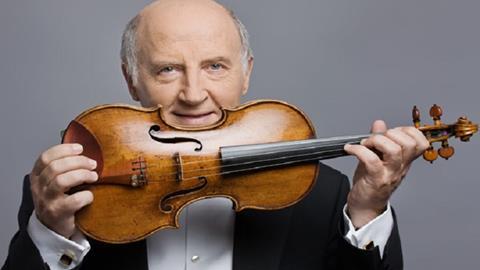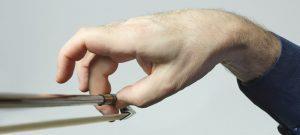Kuschnir is professor of violin at the Music and Arts University of the City of Vienna, and University of Music and Performing Arts Graz. Here he explains how to master control of your sound through correct use of the bow

Explore more Technique like this in The Strad Playing Hub
The following article is published as part of a larger Technique feature by Boris Kuschnir in The Strad’s April 2017 issue
The setting and movement of the right hand is one of the most important – if not the most important – elements of violin playing. The right hand is responsible for the sound you make, so it is vital to build a thorough understanding of how it works.
BOW HOLD AND FINGER WEIGHT
I suggest holding the bow between the thumb and middle finger. This allows you to hold the bow using mainly those two fingers (see below).

The weight of the other fingers can be applied depending on which part of the bow you are using. To find out which fingers are necessary in which parts, divide the bow equally into four.
- In the first part of the bow (near the frog), the main finger required to hold the bow in a horizontal position is the pinkie.
- In the second part of the bow, the main finger needed is the ring finger.
- In the third part, the middle finger is most important.
- In the last part (near the tip), the index finger is most important.
Of course, in practice such an exact distribution of finger pressure changes depending on what you are playing. Often you will need to press on the bow with several fingers at the same time. Nevertheless, conscious weight distribution of each finger while moving the bow is very important. To test this, try playing exercise 1.

In order to use the weight of each finger of the right hand most effectively as the bow moves up and down, it is important to understand the exact movements you have to make with the right hand.
Photos: Wolf-Dieter Grabner
Read: ‘Free and ringing, never forced’ - Technique: Developing bow control for improved tone
Read: Technique: Smooth string-crossings
Discover more Featured Stories like this in The Strad Playing Hub





























No comments yet